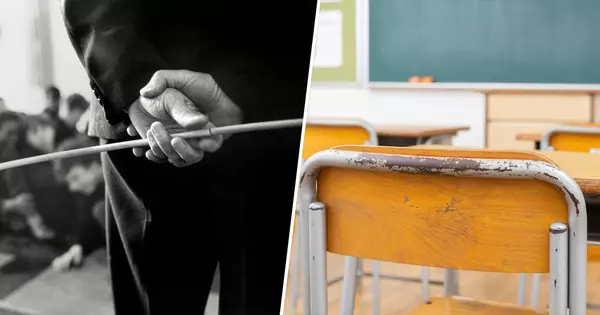School corporal punishment refers to the use of physical force, such as spanking or paddling, as a form of punishment for misbehavior in a school setting. This practice has been widely debated and is now banned in many countries, but still allowed in some others. Opponents argue that it can lead to physical harm and long-term psychological damage, while supporters argue it is an effective means of discipline.
In the late twentieth and early twenty-first centuries, corporal punishment has been variously defined as: causing deliberate pain to a child in response to the child’s undesirable behavior and/or language, “purposeful infliction of bodily pain or discomfort on a student by an official in the educational system as a penalty for unacceptable behavior,” and “intentional application of physical pain as a means of changing behavior” (not the occasional use of physical restraint to protect student or others from immediate harm).
The practice has become controversial and many countries have banned it, while others still allow it. Proponents argue that it is an effective way to enforce discipline, while opponents claim that it can cause physical harm and psychological trauma and is not an effective way to address misbehavior. Research has also shown that corporal punishment can lead to negative outcomes such as increased aggression, reduced academic achievement, and lower self-esteem.
According to the American Academy of Pediatrics (AAP), there are three broad rationales for the use of corporal punishment in schools: beliefs based on traditional religion that adults have a right, if not a duty, to physically punish misbehaving children; a disciplinary philosophy that corporal punishment builds character, being necessary for the development of a child’s conscience and respect for adult authority figures; and beliefs concerning the needs and rigors of education.
Personal anecdotes are frequently used by school teachers and policymakers to argue that corporal punishment improves students’ behavior and achievement. However, there is a lack of empirical evidence that corporal punishment improves classroom control. Evidence, in particular, does not suggest that it improves moral character development, increases students’ respect for teachers or other authority figures, or provides teachers with greater security.
In recent years, this practice has become controversial and many countries and states have banned it, due to concerns about its effectiveness and potential harm to students. Some studies have found that corporal punishment can lead to increased aggression, anxiety, and depression in children, and may even result in long-term harm to their mental health. Instead, many schools and educators are now using alternative methods of discipline, such as positive reinforcement, restorative justice, and counseling, which have been shown to be more effective and have fewer negative consequences.
















